How many types of displays are in mobile devices
Mobile devices, like smartphones and tablets, have screens called displays or panels. These panels are very important for visuals because they show photos, videos, and textual elements. There are different types of displays or panels nowadays used in mobile devices. Let’s discover the main types of displays or panels.

LCD (Liquid Crystal Display)
LCD stands for (Liquid Crystal Display) is a type of screen used in many devices like TVs, computers, and mobile phones. It is one of the most common and basic types of screens found in mobile devices. It works by using a special liquid inside the screen. These crystals are lit by a backlight, usually a white light, that helps make the picture bright. These screens are famous because they show sharp pictures and use less power than older displays.
Types of LCD:
- TFT LCD (Thin Film Transistor)
- TFT LCD is a basic type of LCD screen used in many devices like phones and computers.
- It gives clear pictures but uses more battery power.
- The screen doesn’t look as good when viewed from the different angles.
- IPS LCD (In-Plane Switching)
- IPS LCD is a better version of TFT LCD.
- It displays more real colors and can be seen clearly from different angles.
- It uses less power than TFT but IPS LCD is more expensive.
- Retina Display
- Retina Display is a special type of IPS LCD made by Apple.
- It has a high pixel density, which makes the screen look very sharp.
- Retina displays are mostly found in iPhones and Samsung devices.
OLED (Organic Light Emitting Diode)
OLED (Organic Light Emitting Diode) is a type of screen used in devices like smartphones, TVs, and smartwatches. Unlike LCDs, OLED screens don’t need a backlight. Each tiny part of the screen, called a pixel, can produce its own light. This allows the screen to show very bright colors and deep blacks.
Key Features of OLED:
- Brighter colors: The colors look very bright and vibrant.
- Deep blacks: When the screen shows black, the pixels can turn off completely, making the black look very dark.
- Energy-saving: OLED screens use less power when showing dark colors because some pixels are turned off.
- Thinner screens: OLED screens are thinner than LCDs, which makes devices slimmer.
However, OLED screens are more expensive and may sometimes have problems like “burn-in,” where an image stays on the screen for too long and leaves a mark.
Types of OLED:
There are different types of OLED (Organic Light Emitting Diode) screens, each offering unique features and improvements. Here are the most common types:
- AMOLED (Active Matrix OLED)
- AMOLED is a popular type of OLED used in smartphones.
- It gives bright colors and deep blacks, making images look vibrant.
- It also responds quickly, which is great for videos and games.
- AMOLED uses less power when showing dark images.
- Super AMOLED
- Super AMOLED is a special version of AMOLED made by Samsung.
- It has the touch layer built into the screen, making it thinner.
- The screen is easier to see in bright sunlight and uses less power.
- P-OLED (Plastic OLED)
- P-OLED is similar to regular OLED but uses plastic instead of glass.
- This makes the screen more flexible and less likely to break.
- It’s often used in foldable phones or curved screens.
- Foldable OLED
- Foldable OLED screens are designed to bend or fold without breaking.
- These are used in foldable smartphones and other devices with flexible screens.
Each type of OLED has its own strengths, like being brighter, thinner, or more flexible, making them ideal for different types of devices.
E-Ink Display
An E-Ink Display (Electronic Ink) is a type of screen used mainly in devices like e-readers (such as Kindle). It is different from regular screens because it looks like paper, making it easy to read for long periods without causing eye strain.
Key Features of E-Ink Display:
- Looks like paper: The screen simulates the appearance of ink on paper, making it comfortable for reading, even in bright sunlight.
- Low power usage: E-Ink displays only use power when the page changes, so the battery lasts a very long time.
- No backlight: Unlike other screens, E-Ink displays don’t use a backlight, which is why they are easier on the eyes. Some models have a built-in light for reading in the dark.
Common Uses:
- E-readers: Devices like Amazon Kindle or Kobo use E-Ink displays, perfect for reading books or articles.
- Smartwatches: Some smartwatches use E-Ink to save battery life.
E-Ink is not good for showing videos or colorful images because it is slower to refresh and typically only shows black-and-white text or images. However, some newer versions do support color.
Conclusion
There are multiple types of displays or panels used in mobile devices, each with different features. LCD screens are bright and common, OLED screens show vivid colors and Retina displays are sharp and smooth. Some devices even have foldable screens or special e-ink displays for reading. Each type of display is designed to make using your phone or tablet a better experience, and as technology improves, displays will keep getting better and better!
